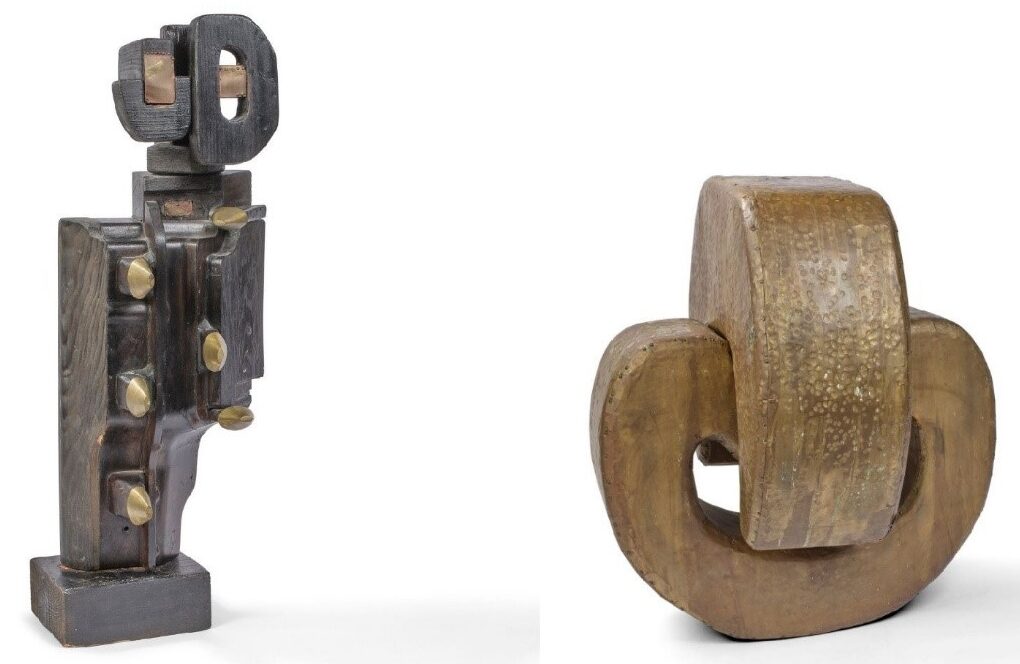Điềm Phùng Thị (1920 – 2002), whose real name was Phùng Thị Cúc, was a native of Thừa Thiên Huế. After becoming a doctor and a PhD, she turned to sculpture and became known as one of the pioneering female sculptors of modern Vietnamese art. With her unique creative ability, especially with the “7 characters” system, Điềm Phùng Thị became a widely influential artist not only in Vietnam but also internationally.
Điềm Phùng Thị was born on August 18, 1920, in Châu Ê village, Huế, Vietnam, and grew up in a family of Nguyễn Dynasty officials. She lost her mother at the age of three and lived with her father during her childhood in the Central Highlands and Central Vietnam for nine years before returning to Huế for primary school. In 1946, Điềm Phùng Thị graduated from the first class of Hanoi Medical University under the Democratic Republic of Vietnam. When the country entered the resistance war, she also served the revolution. Due to illness, she was sent to France for treatment in 1948. After recovering, she continued her studies and graduated in dentistry in France.

Portrait of sculptor Điềm Phùng Thị
It was not until 1959 that she turned to sculpture. In 1966, she had her first exhibition at Galerie des Jeunes, Paris. At the exhibition, her “mother and child” sculpture was purchased by the French government and placed in a children’s park. Publicly received, dozens of her medium and small-scale exhibitions were continuously organized across France, Germany, Italy, Denmark, Switzerland, etc. Thirty-eight of her statues and decorative motifs were placed throughout France. Điềm Phùng Thị’s name became renowned across Europe, and the famous writer and former French Minister of Culture André Malraux gave her the following encouragement: “Điềm Phùng Thị’s talent is evident and moreover recognized.”

Điềm Phùng Thị’s outdoor sculpture displayed in Chenevières, Val de Marne (France)
Điềm Phùng Thị’s sculpture art can be divided into three stages:
1. The initial stage: She studied at the workshop of sculptor Volti and self-taught, creating works in different sculptural schools (mainly neo and classical). During this stage, her works were deeply realistic, harmonious, and sensual, inspired by the female form with an Eastern mystique.

Left: Woman. Bronze. Signed by the author and numbered “5/7”. Size: 9.5 x 11 x 10 cm. – Center: Reclining woman with folded arms. Bronze. Signed by the author and numbered “5/7”. Size: 5.5 x 12.5 x 5.5 cm. – Right: Woman. Bronze. Signed by the author and numbered “2/7”. Size: 9.5 x 7.5 x 10.5 cm.
2. The stage of establishing a unique language: The works in this stage bear a unique and modern style, gradually shaping Điềm Phùng Thị’s artistic language. She gradually refined shapes and subjects into basic elements, laying the groundwork for the birth of characters and spatial arrangements.

Artwork “Returning People from Afar”
3. The stage of assembly and variation: She invented seven modules (7 characters) and thoroughly explored them to create unique works. These seven geometric modules were created when she experimented with leftover wood pieces. They are original shapes that can transform in space, bringing uniqueness to her works in various materials. She shared: “After creating the modules, I only need to structure them in the required space for the sculpture, no matter what that space is. Each monument created in this way is a new whole with a soul, life, and its own dimensions. In short, the appeal of modular sculpture lies in the flexibility of composition and simplicity in creation.”

7 modules, Điềm Phùng Thị’s unique sculptural language
When viewed in person, Điềm Phùng Thị’s works are not just shapes but also rich stories about light, shadow, color, and material, deeply expressing Eastern philosophy. Sometimes, viewers can feel the fragile soul of an expatriate haunted by memories of their homeland. The language she created to convey profound messages about humanity and life is a super-dialogue between Eastern and Western values, modern and traditional, technique and emotion.

Two sculptures in wood and bronze by Điềm Phùng Thị after 1970. Artwork dimensions from left to right: 76 x 30 x 23 cm and 65 x 56 x 54 cm.
Điềm Phùng Thị’s significant contributions to sculpture have been recognized not only in Vietnam but also internationally. In 1991, she was listed in the 20th Century Art Dictionary. In 1993, she was honored as a member of the European Academy of Sciences, Literature, and Arts.
Lê Quang






